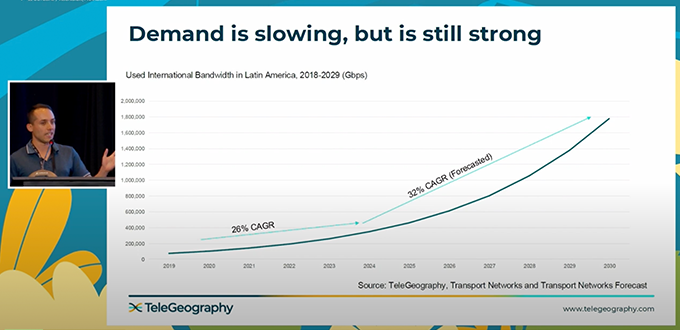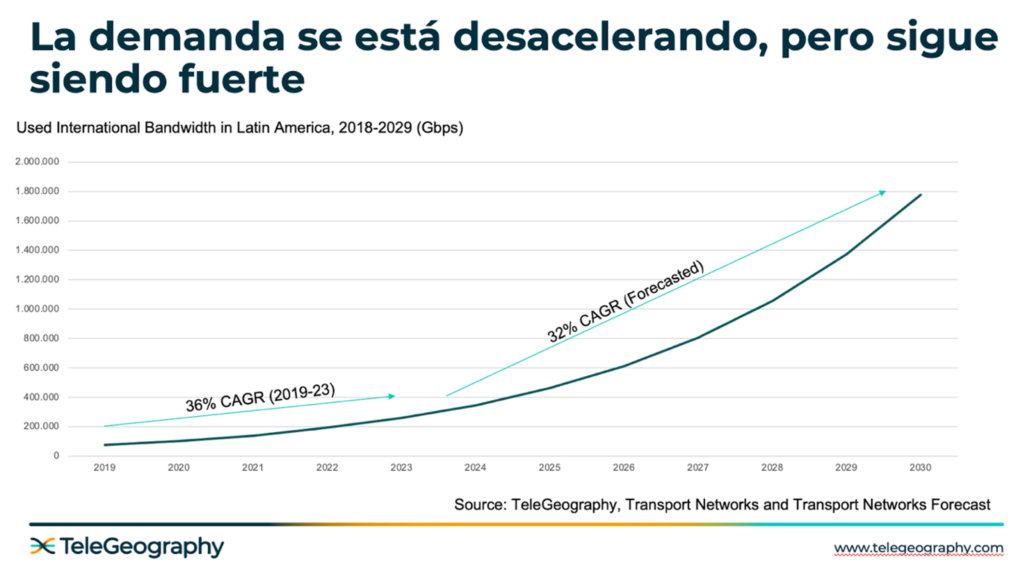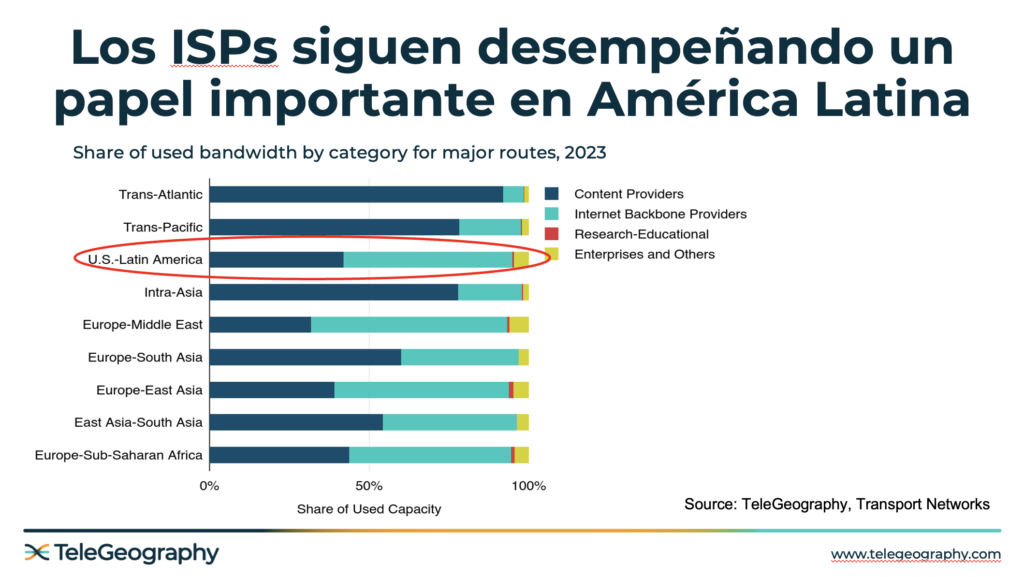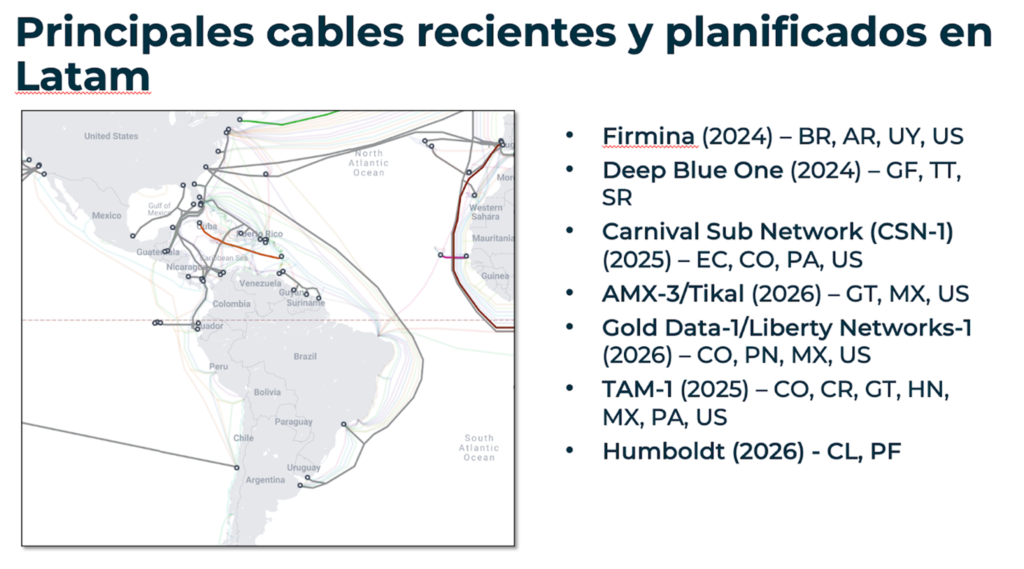Connecting Latin America: The Surge in International Bandwidth Demand
10/10/2024

By Juan Velandia – Analyst at TeleGeography
International bandwidth demand continues to grow in Latin America and the Caribbean, reaching over 250 Tbps in 2023. Although growth rates have slowed down since the spike witnessed during the Covid pandemic we expect steady growth in the future. In fact, between 2024-29 Latin America is expected to grow 32% compounded annually, which is in line with the global average (31%).

To nobody’s surprise Latin America and the Caribbean remains heavily focused on capacity to the United States. International bandwidth connected to the United States and Canada accounted for 79% of the region’s total capacity, a slight decrease from the 85% in 2019. However, despite this small decrease Latin America and the Caribbean remains far more dependent on links to the United States than any other region in the world.
Who is responsible for the bandwidth demand in the region? Content providers like Google, Meta and Amazon are responsible for a growing share of bandwidth connected to Latin America and the Caribbean. Since 2019 content provider demand in the region has quintupled, reaching over 80 Tbps in 2023. Despite this tremendous growth, for now, internet backbone providers still account for over 60% of the region’s total. However, over the same period between 2019 and 2023 internet backbone providers grew at just 31%. Therefore, projecting forward we expect the majority of international bandwidth to come from content providers in the region.

As we can see there are clear signs that demand will continue to grow at a rapid pace in the region. In order to meet this growing demand, new cables are being deployed. These projects are primarily focused on connections in the Caribbean region and Central America (cables like TAM-1, Gold Data-1/Liberty Networks-1 come to mind). Additional projects include Carnival Submarine Network-1 (CSN-1) which will provide a link between Ecuador, Colombia, Panama and the United States.

Even with all of these exciting cable announcements we expect additional projects in the future. Many cable systems in the region are over 20 years old, approaching the end of their lifespans, and will likely be retired by the end of the decade. This means there’s a need to refresh the cable infrastructure on many routes. In Central America and the Caribbean we see various systems that have been active since 2000 (Americas-II, Maya-1, South American Crossing, Pan-American Crossing, Mid-Atlantic Crossing, GlobeNet) and 2001 (ARCOS, South America-1). Each system is different, but in general they are approaching the end of their economic lifetimes and will look to be replaced.
We invite you to watch the recording of this topic presented at LACNIC 42 – LACNOG 2024 for a more in-depth discussion and insights into the future of international bandwidth in the region.
The views expressed are those of the author of this blog post and do not necessarily reflect the views of LACNIC.